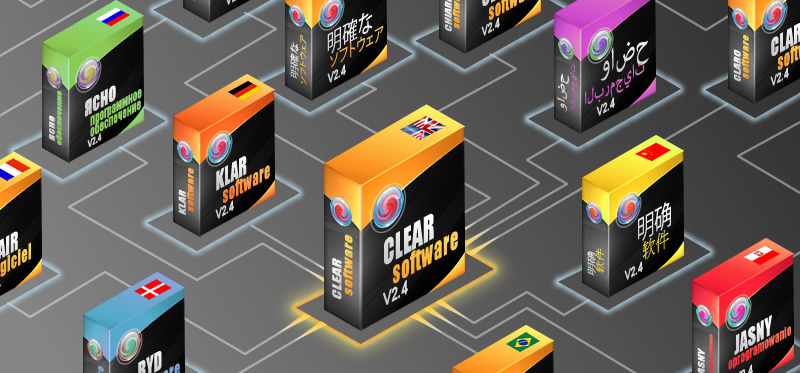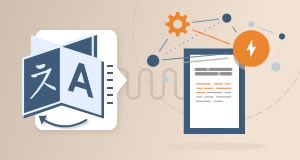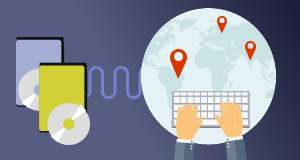In 2014 the global SaaS (Software as a Service) market is predicted to grow by more than 15%. With advancements in technologies, and new emerging platforms highly anticipated, it’s a great time to be part of the software development industry.
Picture this scenario; you’ve built a great new product which has gone above and beyond your expectations in your home market. You want to expand your reach into other markets on an international scale and things look promising. Then you hit a brick wall. Someone asks you if your product is available in Arabic and your stomach churns. You hadn’t thought about having to produce multilingual versions of your software for each target market and now you’ve broken out in a sweat as a tirade of questions begin to fill your mind…
OK, so you might think I’m being a little melodramatic here, surely software developers wouldn’t really allow themselves to be found in such a situation? Well, you’d be surprised. In order to minimise the risk of finding yourself caught out, I’ve provided some useful hints and tips to smooth software localization.
Plan Ahead
I know it’s not easy to predict how successful any product will be in an international market but do not run the risk of being caught out by your competitors. Planning your global expansion is a good way to cover all bases prior to developing a piece of software. Questions to ask could include; who will find this software useful? In which countries would I like to see our software available? Would this require our product to be translated?
A great starting place is to create simple, localised landing pages for the countries you would like to target including product descriptions, which will give you an indication of whether there is a demand for your product in a particular market before going down the software translation route.
Language Specific Considerations
There are standard things to consider when localising anything into other languages, and they are still relevant when it comes to software localization. Here are a few suggestions which should be considered during the development process:
- Leave space for text expansion. In some languages such as German and Russian translated text can expand by up to 30%! It is important to make sure that your software will cater for this expansion as and when it occurs. This is particularly important when it comes to buttons. See the example below:
- Simple things such as character encoding should also be checked. Can your software handle double-byte characters for Asian languages like Chinese and Japanese? By using UTF-8 you shouldn’t have a problem but always double check this.
- Another classic problem faced occurs when localising software into languages which read from right-to-left, such as Arabic. Just like the character encoding it is important to ensure that your software has the capability to accommodate this.
- If you make use of graphics and pictures in your software, it is often recommended to use simple images such as stick people in order to be accessible to all. The most useful advice is never to use hands; there isn’t a single hand gesture which will not be found offensive by one or more cultures globally.
- A useful list of text and graphic considerations to be made during software localization can be found here.
Internationalised Conversions
In order to appear more local to a potential market, it is highly advised that your software incorporates the correct conventions for time, date, currency, name etc. Making these small adjustments will be appreciated by international users. Here are a couple of examples:
- In the UK, we often use commas to distinguish thousands from hundreds when it comes to weight; take 34,500 kilograms for example. In Indonesia however, a comma would not be used to make this distinction. A period would be found instead like this: 34.500 kilograms. Making such a small change will matter, especially when it comes to the difference between ordering thirty-four-thousand kilos of concrete and 500 kilos thirty-four times.
- Another convention to consider, especially when it comes to the filling out of forms, is the variety of ways in which names are displayed in other languages. In the UK, an enquiry form would look like this:
- Here the first name is displayed before last name, or surname. Now take a look at the following PayPal form for Taiwanese users:
- In Taiwan, and other Asian countries, the surname or family name comes first so it is important that your software reflects such country specific conventions, or at least gives the user an option as to how to display their name.
Coding
Everyone knows that software developers love to talk code! When localising software, it is important that certain changes to the code are made in order to accommodate the translated text. The following list highlights some of these changes:
- Make use of localisation-friendly coding, namely Unicode, or UTF-8 as it’s also known.
- Create resource files for each language required ensuring strings are named in a way in which translations can be specified.
- Alongside this, create comments in the software’s resources in order to define context; this will help translators to ensure the correct terminology is used for each string.
- Never concatenate strings; make sure to code the strings together allowing your translators to change the word order as and when required for their native language.
- Always include punctuation in the coding, each punctuated version of a sentence must form a separate string and context should be specified in a comment to aid the translators.
Before Release
The final stages before localised software is made available on the market should include vigorous testing phases including a visual QA check to highlight any areas which may still need work. It is also important to translate any user manuals or materials which will support the software, but it is essential that this is done once the software is complete to ensure that there is consistency between the terminology which appears in both the software and the user guide.
This ‘checklist’ highlights just a few of the things which should be implemented in order to help in the smooth localisation of your software. By following some of these suggestions it will help to reduce the amount of time spent testing the translated version. The most useful advice would be to really make sure that you thoroughly research your potential markets, and in turn this will help you develop a great piece of software, individually tailored to suit its intended user in their own language.
Emily MacKenzie
Latest posts by Emily MacKenzie (see all)
- What is SEO-localisation? - May 11, 2018
- Agile processes for continuous delivery: A focus on SEO-localisation - May 11, 2018
- E-book review: Undertaking SEO-localisation in a world of continuous delivery - May 11, 2018





[…] further information on the technical aspects of software localisation projects please refer to my past […]
[…] If you intend to launch your software internationally, consider these 5 critical steps for software localization, including translation, coding and testing. […]